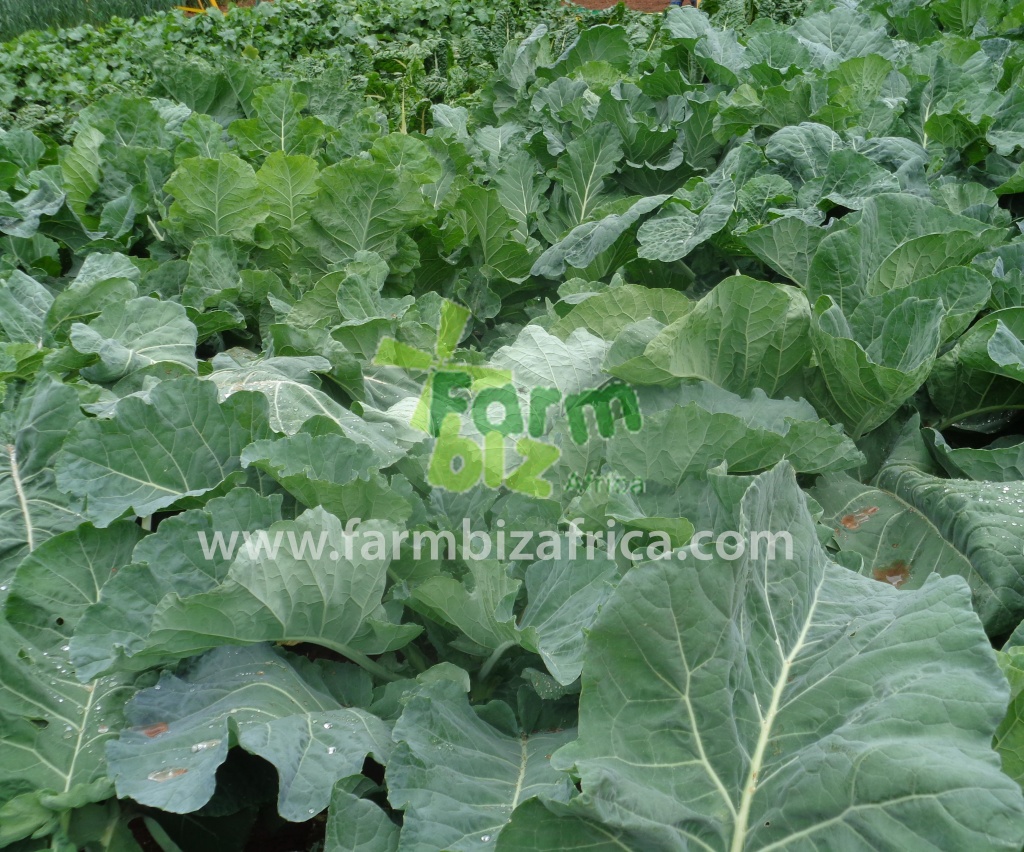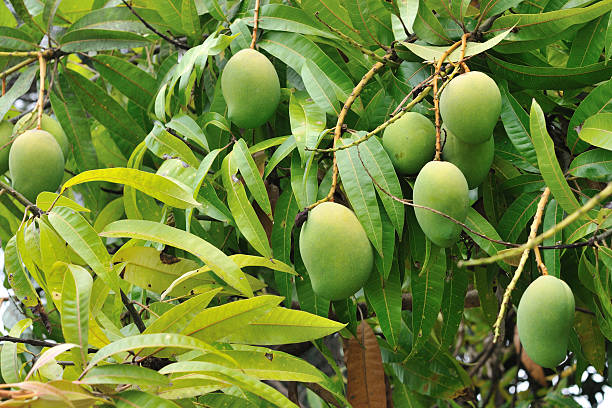Farmers can grow a variety of vegetables for their family and for sale using the bucket drip irrigation kit during the dry season by using only three buckets of water a day at most. This method is cheaper and effective as farmers can use readily available materials in their homesteads.
The bucket drip kit consists of a bucket and two drip tapes of 15m in length with holes (emitters) at 30 cm spacing. The bucket is supported one meter above the ground.
There are two main methods of preparing seed beds namely: double digging and planting on flat land. In dry areas (agro-ecological zones 4 and 5), practice double digging. In less dry areas (agro-ecological zone 3) you may use the conventional method of planting on flat land.

Kales production for family and for sale to earn income
Double digging
- Measure a plot 1 m width 15 m length (1 step by step 15 steps)
- Dig to a depth of 15 cm (length of palm of the hand)
- Remove the dug soil and put it to one side of the dug portion
- Cover the dug portion with green plant materials (e.g. banana leaves, young weeds, tree leaves, and green maize leaves) so that the ground is properly covered
- Put farm yard manure to a depth of 5 cm
- Mix the soil removed earlier and mix it well with a bucket (15 kilograms) of well decomposed animal manure, then return it on top
- Flatten the seedbed and break large soil clods so that the bed is well leveled. You’re now ready to plant the vegetable seedlings.
READ ALSO:Organic fertiliser doubles onions, helps farmer penetrate new market
Onion Production
The recommended varieties for dry areas are Red creole and Tropicana hybrid. Onions should be transplanted when onion seedlings attain a height of 7-8 cm (after about one and a half months after sowing in the nursery)
READ ALSO:Farmer's sukuma wiki variety grows for 10 years
Planting on the drip seed bed
- To mark where the onion rows will start on the drip bed, leave 20 cm from each side of the seed bed
- Plant seedlings on two paired rows with the drip tape in between each pair
- Spacing between the paired rows is 8 cm
- Spacing between onion plants within the row is 4-5 cm
- Plant seedlings shallowly about 2 cm deep • One seed bed carries 900-1000 onion plants
Pests
The most serious pest is the onion thrips. These are thin insects which cause silver spots and withering from the top of the leaves downwards. The pest is common during dry weather. To Control apply diemthoate or folimat when insects are noticed on the leaf sheaths.
Fungal diseases are the most serious. The most common is purple blotch causing purple spots on leaves and leaf curling. Eventually the plants die. Bulb rot occurs if onions are grown in the same field continuously and when the weather is wet. It is controlled by crop rotation with non-related crops eg. Kales, cabbages and carrots. You can also spray with Dithane or Mancozeb.
READ ALSO:Pesticide residues in vegetables will be the end of Sukuma-loving Kenyans
Production of Kales (Sukuma Wiki)
Recommended varieties are Thousand headed and Marrow stem. Transplant when plants are 3 weeks old or when they have four true leaves. They should be about 10 cm tall.
Plant at each drip hole (30 cm) and keep rows 2 feet apart. Apply one teaspoonful of CAN when plants are 8 inches (20 cm) high. After every 3 weeks repeat the fertilizer application. Apply 2 handfuls of manure in each planting hole when double digging is not practiced.
The most serious pests are caterpillars (produced by diamond back moth and cabbage saw fly) and aphids. Apply Karate when caterpillars are observed on leaves and dimethoate to control aphids.
The most serious diseases are black rot and leaf spot. Black rot attacks the stem and gives it a wet grey colour; when touched it feels slippery. The rot gives a characteristic offensive smell.
Always practice rotation to reduce incidence of black rot. Use non related plants eg. Onion, tomatoes, chillies and capsicum. Apply Dithane against fungal diseases eg. leaf spots.
Farmers have reported incomes ranging from KES. 80 to 200 per week from sale of sukuma wiki leaves. It is possible to earn KES. 3,000 to 4,000 from each crop of onions during the dry season.
Write comment (0 Comments)


















